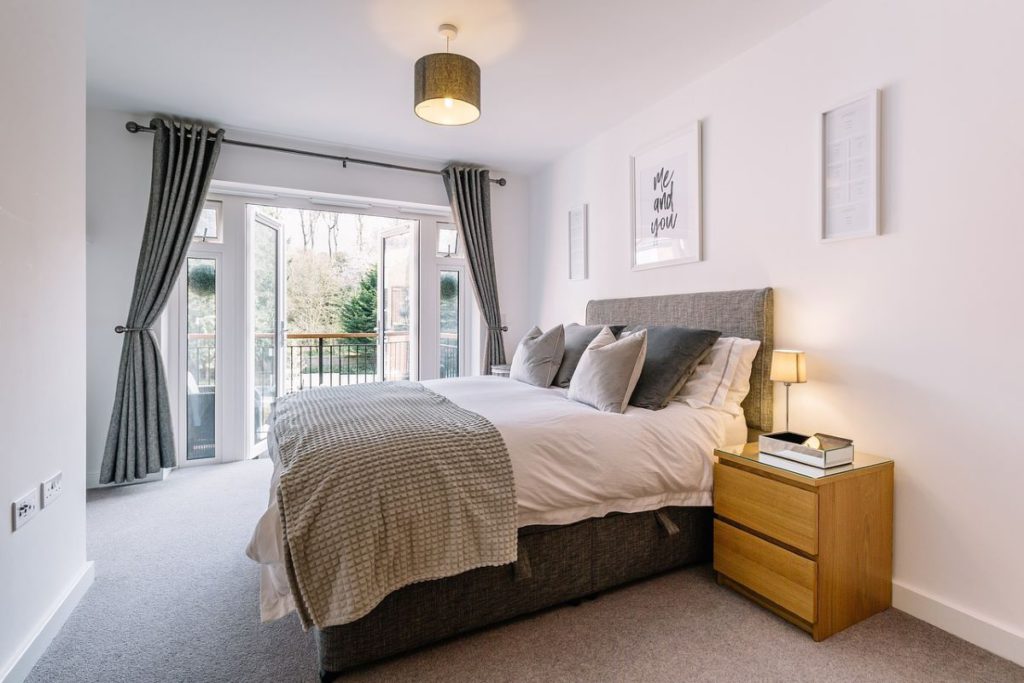In a fast-paced world filled with noise and distractions, the quest for inner peace and tranquillity has become more important than ever. This yearning for serenity has found its way into our living spaces, giving rise to the popularity of Zen-inspired interior design. Rooted in ancient Japanese philosophy, Zen design principles offer a way to create harmonious, calming, and balanced environments that nurture both the mind and the soul.
Embracing Simplicity
At the heart of Zen-inspired interior design lies the principle of simplicity. This simplicity isn’t just about decluttering physical space; it’s about decluttering the mind as well. It tends to avoid unnecessary ornamentation and excessive decoration. Instead, it focuses on creating spaces that are uncluttered, clean, and devoid of unnecessary distractions.
The colour palette in Zen interiors tends to be muted and neutral, with shades of white, beige, grey, and soft pastels dominating the scene. These colours contribute to a sense of calmness and neutrality, allowing the mind to rest and wander without being overwhelmed.
Harmony and Balance

Zen design seeks to establish harmony and balance within a space. This balance is achieved through careful placement of elements, both in terms of physical objects and the flow of energy. A Zen-inspired room typically follows a symmetrical layout, where objects are placed in a way that promotes a sense of equilibrium.
Natural materials play an important role in helping you achieve that balance. Wood, stone, bamboo, and paper are commonly used in Zen interiors. These materials not only connect the space to nature but also lend a sense of authenticity and warmth to the environment.
Connection to Nature
The zen design draws heavily from nature, aiming to replicate the tranquillity of the natural world within indoor spaces. Incorporating elements like indoor plants, bonsai trees, and water features helps establish this connection. A small indoor water fountain or a stone pathway can evoke the sensation of being close to a natural stream or garden, enhancing the overall sense of calm.
Large windows and open spaces are also integral to Zen design. They allow natural light to flood the room, creating an inviting and rejuvenating atmosphere. The incorporation of organic materials like a timber ceiling also fosters this connection, imbuing the space with a sense of rustic tranquillity. The utilisation of timber cladding on selected surfaces can further reinforce the harmony with nature, enveloping the space in an earthy serenity.
Furniture with Purpose
Zen design embraces furniture that serves a purpose without being ostentatious. Low-profile furniture pieces with clean lines are preferred. The emphasis is on functionality and comfort, avoiding unnecessary embellishments or excessiveness. Tatami mats, traditional Japanese floor coverings, are often used to enhance the sense of simplicity and provide a comfortable seating arrangement.
Mindful Arrangement
The arrangement of objects in a Zen-inspired interior is a mindful process. Each item is placed with intention, considering its relationship to the entire space. Negative space is as important as the objects themselves, allowing the eye and the mind to rest.
Minimalism and intentional design choices also extend to decor items. Zen interiors often feature a few carefully chosen decorations, each with its own purpose and significance. These items might include carefully arranged stones, a bonsai tree, or a piece of calligraphy.
Encouraging Mindfulness
A significant aspect of Zen-inspired interior design is its ability to encourage mindfulness. The deliberate design choices and the serene environment invite inhabitants to slow down, be present and appreciate the beauty in simplicity. Whether it’s a designated meditation corner or a comfortable reading nook, Zen interiors offer spaces that facilitate reflection and introspection.
Cultivating Tranquillity through Textures
Textures play a vital role in creating a tactile and serene atmosphere within Zen interiors. Natural textures like rough stone, smooth wood, and soft fabrics come together to offer a sensory experience that aligns with the principles of Zen design. A woven straw mat or a shoji screen can add depth and interest to the space while maintaining a sense of understated elegance.
The Ritual of Tea
Tea holds immense cultural significance in Zen philosophy, and this reverence for the ritual of tea is often reflected in Zen-inspired interiors. A designated tea room with a tatami floor, low table, and minimal decor elements can be a centrepiece of the design. The tea ceremony itself embodies mindfulness, balance, and respect – all core principles of Zen design.
Finding Zen in Modern Life
While Zen-inspired interior design has its roots in ancient traditions, it can be seamlessly integrated into modern lifestyles. The principles of simplicity, balance, and mindfulness remain timeless and relevant, providing a sanctuary from the demands of contemporary living.
In a world filled with constant stimuli, cultivating a sense of peace and tranquillity within our living spaces has never been more important. By embracing the principles of Zen-inspired interior design, we can create harmonious environments that not only reflect our desire for serenity but also help us find it amidst the chaos of the modern world. Through mindful design choices and a deep connection to nature, Zen-inspired interiors offer a path to creating spaces that nurture the soul and soothe the mind.

